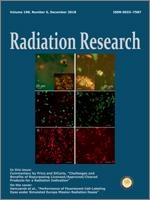There have been numerous published studies reporting on the extent of genetic damage observed in animal and human cells exposed in vitro and in vivo to non-ionizing radiofrequency fields (RF, electromagnetic waves that carry energy as they propagate in air and dense media). Overall, the data are inconsistent; while some studies have suggested significantly increased damage in cells exposed to RF energy compared to unexposed and/or sham-exposed control cells, others have not. Several variables in exposure conditions used in the experiments might have contributed to the controversy. In this comprehensive review, four specific quality control measures were used to determine the quality of 225 published studies in animal and human cells exposed in vitro and in vivo to RF energy, and the results from 2,160 tests with different sample sizes were analyzed. The four specific quality control measures were as follows: 1. “Blind” collection/analysis of the data to eliminate individual/observer “bias”; 2. Adequate description of “dosimetry” for independent replication/confirmation; 3. Inclusion of “positive controls” to confirm the outcomes; and 4. Inclusion of “sham-exposed controls” which are more appropriate to compare the data with those in RF exposure conditions. In addition, meta-analysis of the genetic damage in cells exposed to RF energy and control cells, thus far available in the RF literature database, was performed to obtain the “d” values, i.e., standardized mean difference between these two types of cells or the effect size. The relationship between d values and the above-mentioned quality control measures was ascertained. In addition, the correlation between the quality control measures and the conclusions reported in the publications (no significant difference between the cells exposed to RF energy and control cells; increased damage in former cells compared to the latter; increased, no significant difference and decreased damage in cells exposed to RF energy in the same experiment; or decreased damage in cells exposed to RF energy) was examined. The overall conclusions were as follows: 1. When all four quality control measures were mentioned in the publication, the d values were smaller compared to those when one or more quality control measures were not mentioned in the investigation; 2. Based on the inclusion of quality control measures, the weighted outcome in cells exposed to RF energy (d values) indicated a very small effect, if any; 3. The number of published studies reporting no significant difference in genetic damage of cells exposed to RF energy, compared to that of control cells, increased with increased number of quality control measures employed in investigations; 4. The number of published studies reporting increased genetic damage in cells exposed to RF energy decreased with increased number of quality control measures; and 5. There was a “bias” towards the publications reporting increased genetic damage in cells exposed to RF energy even with very small sample size. Overall, the results from this study underscore the importance of including quality control measures in investigations so that the resulting data are useful, nationally and internationally, in evaluating “potential” health risks from exposure to RF energy.
How to translate text using browser tools
19 October 2018
Comprehensive Review of Quality of Publications and Meta-Analysis of Genetic Damage in Mammalian Cells Exposed to Non-Ionizing Radiofrequency Fields
Vijayalaxmi .,
Thomas J. Prihoda
ACCESS THE FULL ARTICLE

Radiation Research
Vol. 191 • No. 1
January 2019
Vol. 191 • No. 1
January 2019




